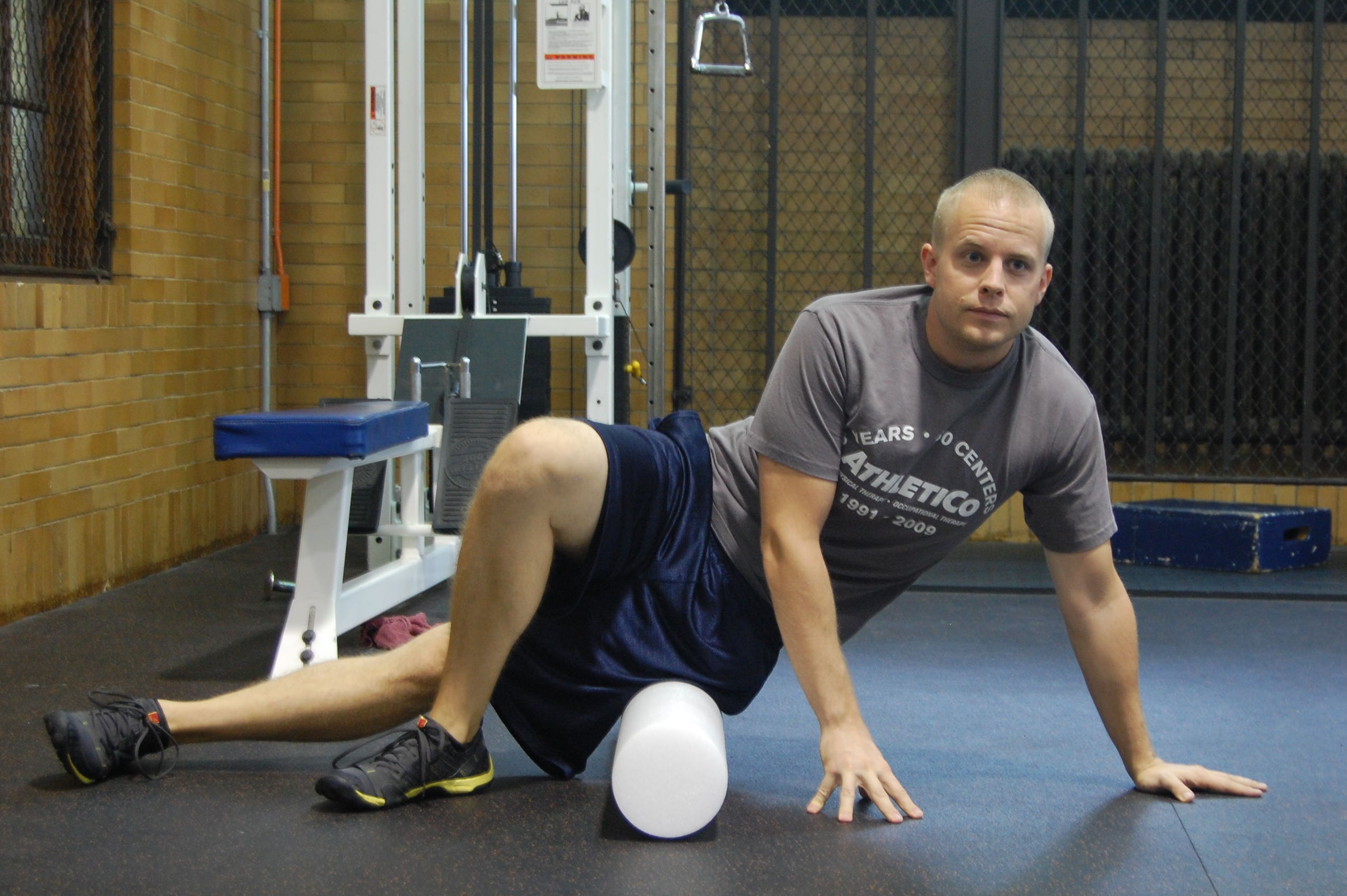Does foam rolling really do anything for me?!
The other day one of the guys I work with, who I love and respect as an amazing trainer, who specializes in body building; was walking around moaning and groining because his legs were so sore. (Typical male…moaning and groaning cause something hurts…wah wah :P)
I told him he should do some serious foam rolling or roll on a 12” softball ball (self myo-fascial release). He quickly said “NO!” “I don’t believe in that. It has been proven that it does nothing. Range of motion is NOT improved. All it is blood gathering in one area”…something something, “it’s actually bad for you.” He went on and on. I really didn’t understand his argument, but I didn’t have the verbiage or the energy to provide a proper debate…so I just smiled, nodded and said oh?! Plus he has been in this industry for years….could he possibly be right?
I scurried over to my buddy Luciano Johnson: LMT (License Massage Therapist), ART (Active Release Technique), CPT (Certified Personal Trainer); who answers all my physiology and kinesiology questions. I am often shadowing him and pick his brain, which really turns into him picking my brain followed by a lecture. I still appreciate our times.
Much of the information that is out there about fitness and the human body is theory not fact. I explained the conversation that the body builder and I had, asking if it was another case of trainers jumping to conclusions /different philosophies or if there was some kind of truth to this. He didn’t even know where to begin. There is so much information about this subject it is very hard to narrow it down, but I will try my best.
Before I get into the topic of self-myofascial release, everyone DOES need massages monthly. Especially if you are active and work out. Luciano does Active Release Technique, which is used to treat conditions related to overused muscles. Adhesions and scar tissues build up, and muscles become shorter and weaker. The motion of muscles and joints are then altered and nerves can be compressed. As a result tissues suffer, lack of natural blood flow, then pain and poor mobility. Many conditions can be treated with ART. This is why I immediately sought him for a deeper explanation
The Kinetic Chain: is a combination of Soft Tissue (muscle, tendon, ligament and Fascia), Neural system (sensory and control, cells tissues and organs), and Joints (articular system). If one of these systems is not functioning efficiently, the other components must compensate, leading to tissue overload, fatigue, faulty movement patterns which leads into a growing or repetitive injury cycle.
How many times did you do a hard workout and can’t move too much the next day… it’s because your muscles are tight and worked hard. Muscle tightness restricts range of motion (movement of a joint from full flexion to full extension). The amount of movement in a joint varies greatly between individuals. Joints maintain a balanced range of motion by regular use and stretching of the surrounding soft tissues (muscles, tendons and ligaments), (Physical Therapy (PT). Merck Manual Professional). The joint motion is altered changing normal feedback to the central nervous system. Ultimately, neuromuscular efficiency is compromised, which leads to poor movement patterns. It is very necessary to cater to this muscles tightness right away. You must stretch…you must release that build up.
Fasciae are dense regular connective tissues, containing closely packed bundles of collagen fibers oriented in a wavy pattern parallel to the direction of pull. Fasciae are consequently flexible structures able to resist great unidirectional tension forces until the wavy pattern of fibers has been straightened out by the pulling force. These collagen fibers are produced by the fibroblasts located within the fascia.[2] (Wikipedia). Fasciae surround muscles or other structures. Again if this is compromised in any way…faulty movement patterns.
Now the subject at hand SELF MYO –FASCIAL RELEASE engages the tissue barrier or the tension in the tissue. You apply pressure with foam roller or ball until the tension releases or gets loose. Direct myofascial release is an attempt to bring about changes in the myofascial structures by stretching or elongation of fascia, or mobilizing adhesive tissues. The practitioner (LMT or ART) will move slowly through the layers of the fascia until the deep tissues are reached. You never want to attack the muscle with the roller. You must be relaxed, or else you will tense up and muscle becomes tight again. There is a bit of a argument to foam rolling being best when your muscles are warm. Do cardio for 5minutes, then foam roll (almost get into a meditative state and relax), then static stretch after to realign the fascia. The other argument is; to best roll before anything, while you’re muscles are fresh so you can find something better, if there is a serious knot right away. Then stretch and onto your warm-up. No matter if you foam roll first or cardio first, you MUST stretch AFTER the rolling out to realign the muscles you just untangled.
When I foam roll I can feel the tension and I can also feel when it gets looser after working on it for a little. There are times rolling out and stretching does the trick and there are times where I really need someone to work on my muscles. Ask your fitness professional what areas you should roll out and how.
Nothing will be better than an actual professional getting in there and seeing for themselves what the possible problem is. Maybe even some assessments depending on the severity. An actual pressure or tension release from an LMT or ART (which you have to be licensed to do so or a Doctor) is the best form.
If at any time you are uncertain something like this philosophy, will harm or help…seek a professional.


